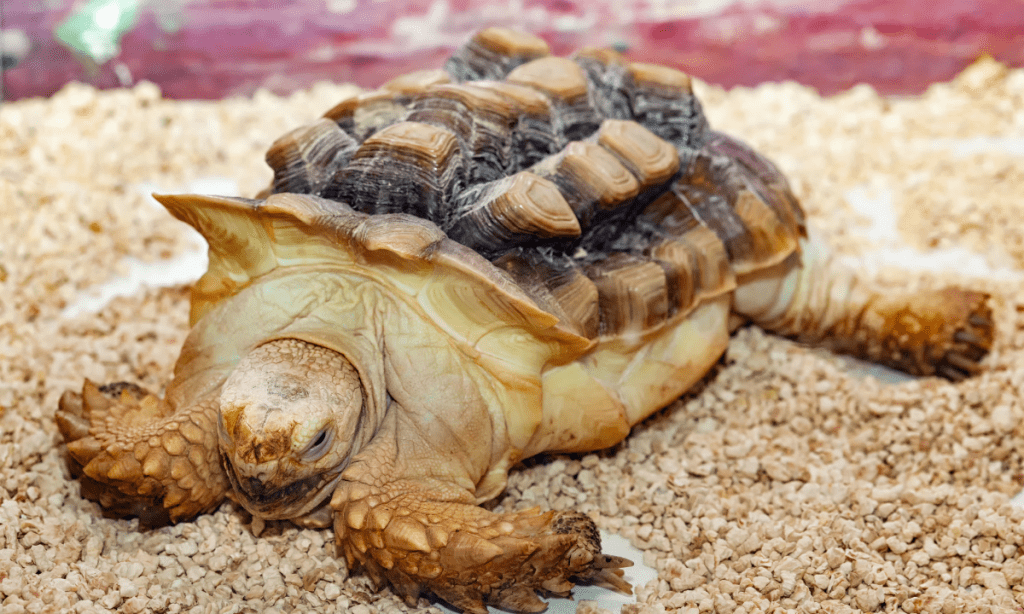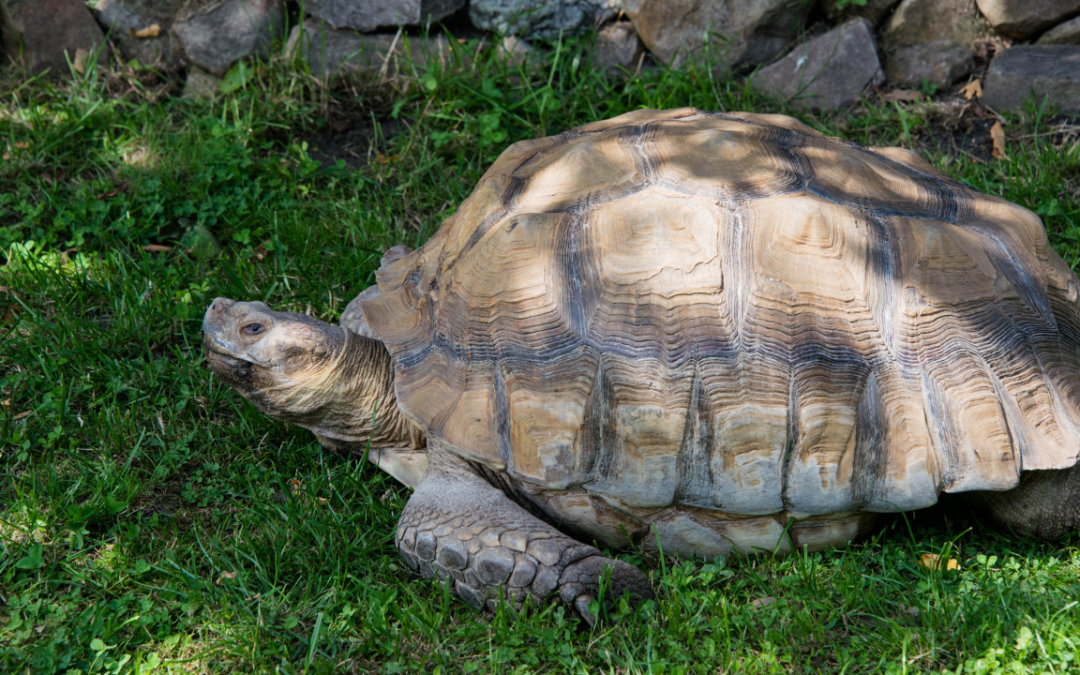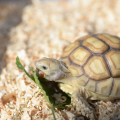Table of Contents
You might be in the hunt for pet tortoises; or you are just another animal nerd that’s now on the hunt for a great tortoise guide, that is factual and credible. Whichever you are, you’ll learn the complete informational guide that will come in handy if you are about to pet one, or if you are to enhance and widen your knowledge about them. These slow yet incredible; and wonderful animals that exist have lots of fascinating information that you will learn from this article.
Terrestrial Turtles

A tortoise is a terrestrial turtle that is intrinsic to the Testudinidae family. They are particularly to be excluded by other turtles because they are strictly land-dwelling; they cannot swim, while almost all other turtles are mainly aquatic, which is fond of swimming so much. Like other turtles, however, they also have shells that protect them from predation and other threats. The shell of tortoises is hard, they can retract their necks; and head directly back into their shell, as means of guarding themselves.
These creatures are small to large-sized. Most of them have a tall upper domed shell, also known as carapace. Their back legs are sturdy and thick and resemble the legs of an elephant. Their front legs can be described as rather flat and surrounded by large scales. The toes do not contain webbing between them; and many species of tortoise have five claws on each of their feet, which they use greatly for digging. They weigh as heavy as 255 kilograms and have upper shells that grow up to 1.4 meters long.
What’s It Like to Own a Tortoise?
Talking about their personality, they are quiet, harmless, and generally shy but impressively display intelligence. They can identify their owner, they know their feeding schedule, their playtime, bath, down, and sleeping time. They move slowly, but because they also display fearfulness, they are quick to withdraw their heads; and hide in their safe shells. For the most part, they are affectionate, in a way that would just like to follow you and observe; spend quiet times, not in a way a traditional pet would show love about.
They are plant eaters that eat everything from glasses, flowers, and leaves. They enjoy seeds and fruits as well. Funny enough, if they ever come across an insect, worm, or a few dead or alive small animals; they will not hesitate to feast on those.
Tortoise Distribution
They are to be found all over our continents; except Australia and Antarctica, and they live in varying habitats including deserts, grasslands, forests, and other shrubby areas. Most of them live in warmer climates in North and South America, Europe, Asia; and Africa, where they make their home on the large islands of the said continents.
Popular Types of Tortoise
There are about 49 distinct types of tortoise, and while it seems impossible to discuss them all in all. I narrow the top 10 most sought-after as pets, and generally popular in zoos and amusement parks. Let’s discuss them one by one.
Egyptian Tortoise
Also known as Kleinmann’s tortoise, they roam on deserts of Egypt, Libya, and relevant parts of Israel. They are one of the smallest types of tortoise breeds known to man. They grow to be only about 5 inches (ca. 13 cm) long, and in the wild, they are validated to be critically endangered. With this, tortoise enthusiasts and exotic pet owners only purchase them from authorized breeders to protect their endangered wild population.
Their small size allows them to quickly reinforce their body temperature and avoid overheating. They are pale; as if like sand, and they let them reflect heat; while also blend in their landscape to avoid predation. They stand out for their smart intuition for the environment, and they are active mostly on the day.
Marginated Tortoise
This type of tortoise is native to Greece and is actually named after their unique flared rear marginal scutes. The creature is the largest European breed, that goes about 12-14 inches long. They are known for their love of digging and spending time outside whenever possible. Fond of the warm weather.
The shell of this creature is oblong with a notable thickness around the middle of its body. The posterior end of their shell has a saw-like formation, and is a flange, almost looking like a bell.
Pancake Tortoise
To be found in South Africa, this type of tortoise is famous for its flat; aquatic turtle-like shell, which is uncommon to tortoises because they all have rounded, domed-looking line shells. Their flat shell; unfortunately, does not provide much protection to their predators, luckily; they have stores with some speed and flexibility in them that is again, uncommon to most tortoises that are known for their very slow demeanor.
The pancake tortoise is the fastest tortoise, due to the lightness of its shell, moreover a species of the best climber. Rather than ducking into its shell for protection, they are fond of running and climbing through rocks, because they are unsure whether they are entirely safe depending on their own home, their shell.
Leopard Tortoise
Leopard tortoises reside in Africa and are considered to be the fourth-largest tortoise in the world. They grew over 17 inches (ca. 43 cm) long and weighed up to 50 pounds (ca. 23 kg). Due to their massive size, they require a completely outdoor exposure, or else they will be stressed as it feels restricted.
Their name is due to the speckled pattern on their shell that is simply stunning and very attractive. Their shell is noticeably high and domed, sometimes occurring with pyramid-shaped scutes.
Hermann’s tortoise
Coming from the Mediterranean Basin, this type of tortoise is a small and compact tortoise that is mainly unique because of its single, horn-like claw that is recognized on the tips of its tails.
They are loved for their attractiveness, yellow and brown shell, thick scales, and strong legs. They adjust well to any type of climate and are relatively easy to raise. Furthermore, they are very active and like to dig, forage and sunbathe.
Gopher Tortoise
Gopher tortoises are the only species of turtle residing in North America. They are known for their gray shells that fascinate people seeing them. They have yielded their name because it digs deep burrows, resembling a gopher.
The creature is listed as a keystone species, suggesting that it holds importance to the health of our ecosystem. Gopher tortoises burrows are the reason a hundred animals, ranging from frogs up until owls and indigo snakes, have shelter to live in.
Hinge-back Tortoise
This type of tortoise is relevant to Africa, and they are known for their 90-degree hinged section that is placed at the rear of their shells to help in protecting their legs. Hinge-back tortoises vary in shades, with most of them having a distinct dark brown color and some, fascinating black.
Radiated Tortoise
These beautiful tortoises reside in Madagascar. They are known for having high-domed, rich dark brown shells that are decorated with their famed patterns of bright orange and yellow radiating lines. Also, it is notable that they have smoother scutes, comparing other relevant species.
Aldabra Tortoise
Aldabra Giant tortoises are impressive giants that are situated in the Indian Ocean. They are famous for their high-domed shells that are brown with large scutes. They have thick legs and long necks that provide access for them to feast over lower-hanging tree branches. Furthermore, they are continuously providing drastic effects on their local ecosystem, as they provide clear vegetation for other animals.
Galapagos Tortoise
These magnificent, and famous from all around the world tortoises are considered to be the largest species of tortoise here on our planet. They are native to seven islands in the Galapagos archipelago in Ecuador. They have dark brown to gray, and some with rich black shells, and were actually named by Spanish explorers in the 1500s. The name itself is extracted from the Spanish word for saddles, as their shells resemble it.
The Thing About Tortoises
Every single tortoise is a turtle, but no turtle is a tortoise
This is due to the fact that a turtle is any shelled reptile that participates in the order Chelonii, and the title “tortoise” actually represents terrestrial turtles. Tortoises belong to the land and land only, and they cannot swim, and they are herbivorous. Turtles, on the other hand, live on bodies of water, can swim, and are omnivorous.
A group of tortoises accounts for what we called creep.
Creeps however are not seen often as tortoises are solitary animals. However, you are to spot a mother tortoise that is very protective of their nest, that fades away as they do not care much for their young as they hatch.
Tortoises have an exoskeleton. Also, they surprisingly have an endoskeleton.
The exoskeleton is the external skeleton that provides support and protection to the tortoise’s body. An endoskeleton is a skeleton that is found internally, on the inside of the body.
Their shell has three main parts. Namely, the top carapace, the bottom plastron, and lastly, the bridge that fuses all their pieces together. We humans cannot see them, but they have ribs, collarbone, and spine inside their shells.
They have god set of eyes
Unlike most reptiles, tortoises actually have a very impressive vision that is drawn to bright colors. They are fast to spot bright hues that look like edible flowers to them. Moreover, this helps as they are sociable as well, and you are likely for them to be remembered by.
Tortoise exist for extremely long, periods of time now
It is shocking to even comprehend how tortoises are here on our planet and have been roaming around for over 55 million years.
Their lifespan is over 150 years
Healthy tortoises are to exist for over 150 years, this is because of how they grow extremely passive throughout their years. There exist rare tortoises that lived for almost 200 years.
They survive and navigate life on very few resources
Tortoises are kings and queens of extracting even the smallest amount of food and water from each taste of the food they take. They have a hind gut system that exists with a double digestive tract that sets apart water from their waste when the sources are scarce. Also, with their extremely slow metabolism, they are able to do just fine, long periods of time with no water or foods at all, as they do not digest them easily.
Tortoises can clasp their breath for long periods of time
They are extremely tolerant of carbon dioxide, which is seen as a good thing because they have to empty their lungs before they can go to their shells. When you observe them, you will often hear them exhale when they are agitated and decide to hide.
Their shells are sensitive and delicate to touch
This is because their shells contain nerve endings, so tortoises can feel every rub, pet, or scratch, and a few delicate and soft touches would not hurt, and they actually love it but for heavy and insensitive ones, you can hurt them.
Tortoises live all around the world and can tolerate almost all climates to exist
You can spot tortoises all over all continents roaming around, except Australia and Africa. And we all know how each continent deals with varying types of climate and impressively, all types of tortoise do well in all of them. In addition to the two preceding facts, the lighter the shell of a tortoise, it means they have a warmer origin, as tortoises from hot places tend to have light-colored shells than those of which live in cooler areas.
Eight Main Differences Between a Turtle and Tortoise
Tortoises, turtles, slow, shell home appealing physical attributes, quiet, manifesting color green, small head with cute claws of feet. These are all stereotypes of what an average person thinks of both tortoise and turtle, most do not even care to distinguish the two of them. However, distinguishing them is important as it resolves these biases, makes us more educated, aware and would help in future decisions if we are to weigh if what we want is a turtle or a tortoise. Let’s get to the discussion of their 8 distinct differences you need to pay attention to.
Habitat
Tortoises are terrestrial turtles that live only in the land, while turtles are aquatic that live and spend most of their time in bodies of water.
Tortoises are not built for water, and thus they live completely in the land and are most commonly found in a diverse variety of environments, including deserts, grasslands, evergreen, scrub, and tropical forests. Discussing turtles, they can be completely aquatic, with considerations with egg-laying, semiaquatic, or mostly but not entirely terrestrial. Sea turtles that rarely leave the ocean and freshwater turtles can be found living in, while also living in most aquatic environments, such as ponds and lakes.
Physical Differences
Turtles, considering they live and spend lots of time in waters, shells are relatively flat, thin, and streamlined, as it aids in helping them swim and dive. Whilst tortoises, considering that they are land-dwelling and technically heavier, their shells are round, a dome in appearance as it provides protection from their predators.
Turtles also shed their scutes to remove their old-growth and make space for new scutes to manifest underneath. The reason is that they bask in the sun to dry those, and it aids in them flaking off. Moreover, turtles love to rub their shells on trees and rocks in hopes of scraping their scutes off. On the contrary, tortoises do not shed anything at all from their shells. This is due to their keratin constantly growing with shedding, which just pushes up the old growth to make way for the shell to have a layered look.
Tortoises have feet that manifest padded and stumpy, with horned scaly, elephant-looking feet. This structure helps them in carrying their weight around their habitat. While turtles are very different. With it being webbed with long claws that aid in latching onto floating objects and climbing in and out of the water, it is more of a set of flippers, rather than a set of feet.
Swimming ability
Tortoises stay away from water, except for bathing and drinking purposes, as they cannot swim. Their body is not built and designed for swimming, primarily because of their shells that are heavy and dome-shaped. Turtles, inversely have their body built and designed sleek, with the perfect shell shapes and feet flippers, they are excellent swimmers.
Range
Turtles and tortoises alike are found primarily in tropical and semi-tropical climates, as they all need warm temperatures, despite the latter being highly adaptive to any climate.
Turtles are found on every continent except Antarctica, and tortoises are seen everywhere, except Antarctica and Australia. The biggest variety of turtles lies in North America and Asia, while the most diversified number of tortoise species can catch sight of in Africa.
Diet
Tortoises and turtles both thrive well in a diet that is plenty of nutrients and minerals that aids in healthy shell growth, but the two have evolved in different diets.
Tortoises are herbivores, with their diet respecting their specific species and age. They are typically on a wide diet that slowly covers large distances. They graze upon leaves, weeds, grasses, fruits, and vegetables as they find their way across these. Turtles, on the other hand, are omnivores that eat a similar variety of plants as tortoises and support those with protein sources extending from worms and insects to jellyfish and small fish.
Lifespan
Tortoises are animals that are to be the longest to live, amongst every other creature to live on our planet, and turtles do not even come across as big.
The average lifespan of a turtle is roughly 30 years, with a large variety of them around 65 years. On the contrary, tortoises have an average lifespan of nearly 100, with a larger variety of them even succeeding almost 200 years old.
Is a Tortoise Worth Keeping as a Pet?
It is definitely yes, as all other animals are. They are quiet, they are intelligent, they are low maintenance, and they have a unique endearing aura that makes them appealing to our eyes. They are affectionate to their owner, and given that they are slow physically, their brain is quick in recognizing you and is very open to forming unique relationships with their respective owners. However, you are to decide objectively and with lots of consideration, as they are living for a very long time.
Caring for a tortoise, if you are to pet them yourself, is a huge and great commitment, one that should not be taken in any way lightly. However, I would be lying if I told you that they are boring to care for, as the experience of caring for them is incredibly rewarding, moreover, very loving in its unique ways.
Conclusion
Tortoises are definitely an animal that is to be respected, cared for and loved. With their interesting past, their interesting life, and their capabilities, they are deserving of having a sanctuary and people that will be willing to have them. This fact is important to be conscious and aware about, to reinforce the belief that not just because tortoises are very appealing and fun creatures, it is not enough reason to own one.
If you are to own a tortoise, you are to approach your decision objectively as to their very long lifespan, longer than what you have will cost them, very slow suffering if you are not certain and dedicated to them. Inversely, if you are certain if you are to be willing objectively and approach the decision rationally, your very own tortoise will thank you in advance for a secure, wonderful, and fulfilled life experience they will have with you, and your future family.






 Author and long-time animal lover. Sharing knowledge on pet care through experience and the written word.
Author and long-time animal lover. Sharing knowledge on pet care through experience and the written word. 